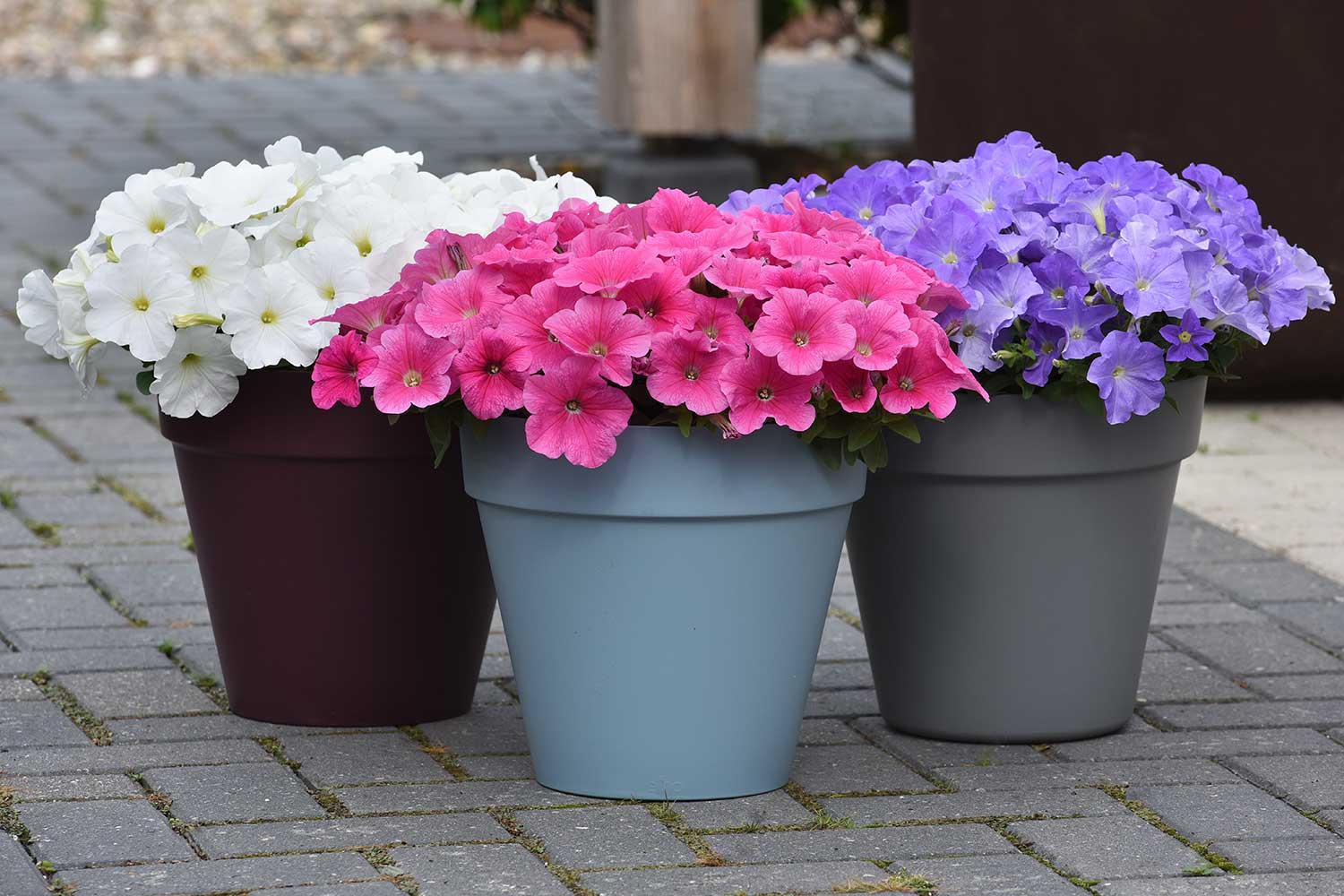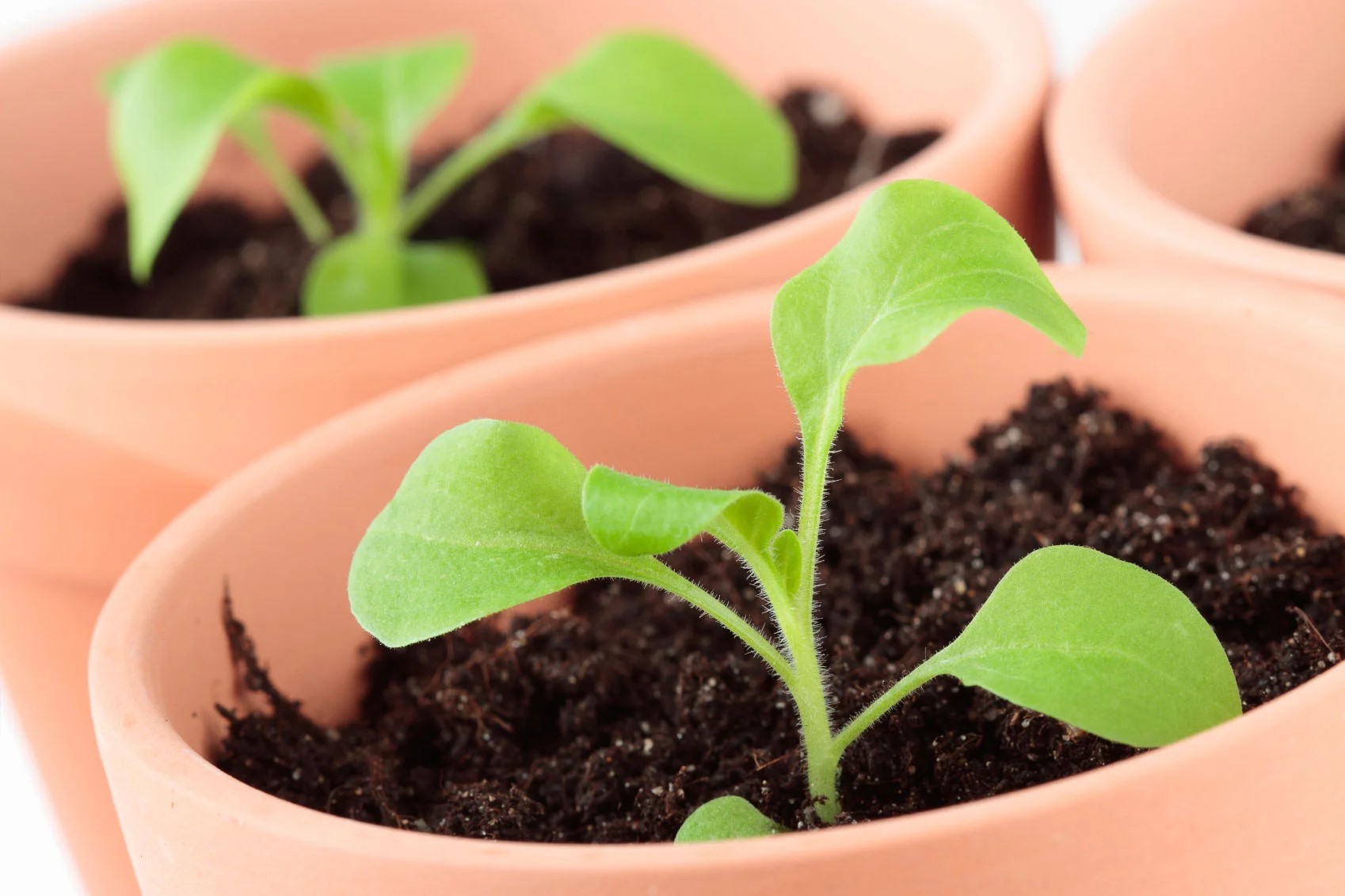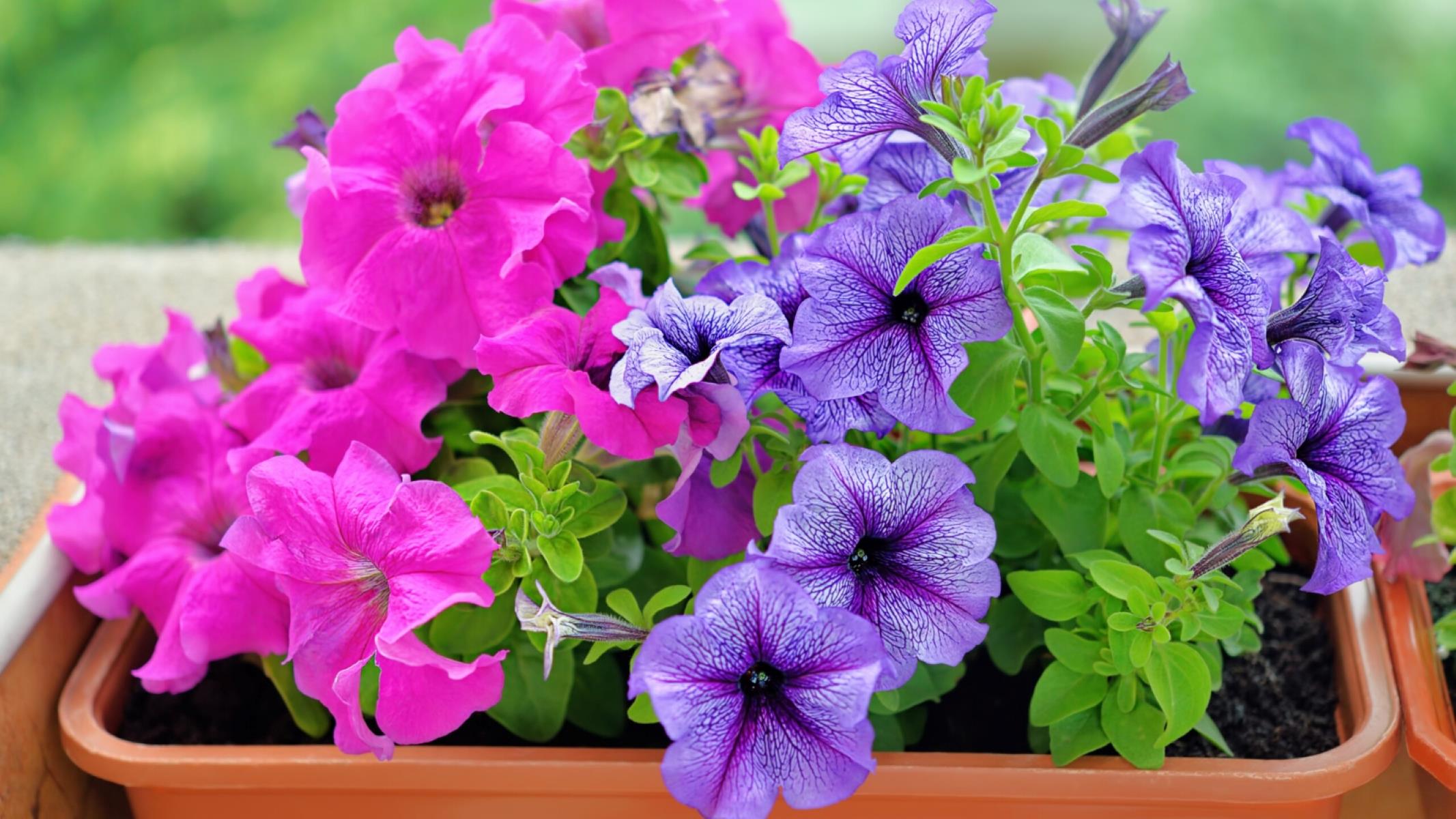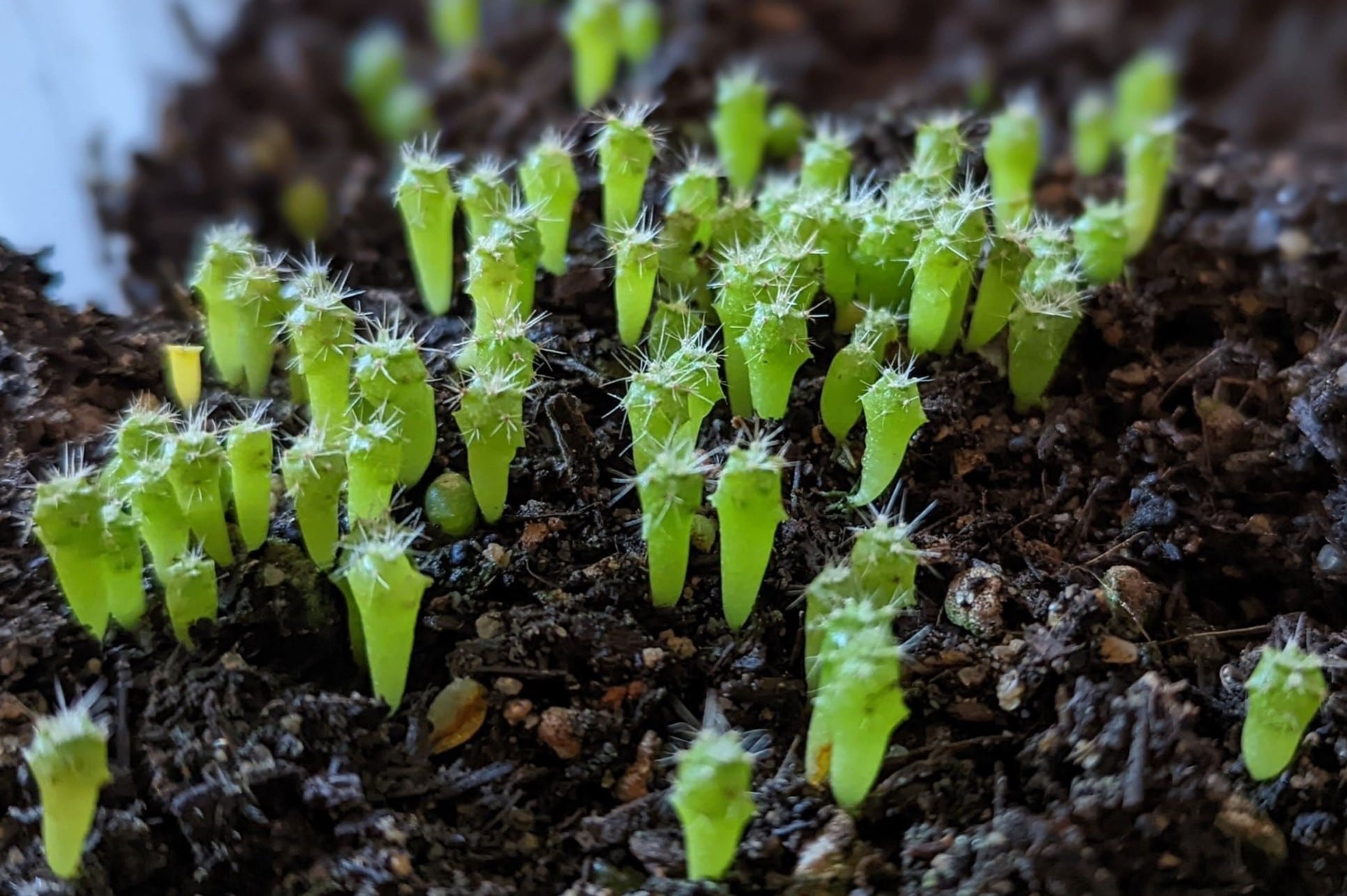Home>Garden Essentials>How To Grow Wave Petunias From Seed


Garden Essentials
How To Grow Wave Petunias From Seed
Modified: March 16, 2024
Learn how to grow beautiful wave petunias in your garden from seeds with our step-by-step guide. Increase the vibrancy of your outdoor space!
(Many of the links in this article redirect to a specific reviewed product. Your purchase of these products through affiliate links helps to generate commission for Storables.com, at no extra cost. Learn more)
Introduction
Welcome to the wonderful world of gardening and the joy of growing beautiful wave petunias from seed! Wave petunias are known for their vibrant colors, delicate blooms, and cascading growth habit, making them a popular choice for adding color and charm to any garden or landscape.
Whether you’re a seasoned gardener or just starting out, growing wave petunias from seed is a rewarding experience that allows you to watch these stunning flowers come to life, from tiny seeds to full-grown plants. In this article, we’ll guide you through the process of growing wave petunias from seed, providing you with the knowledge and tips you need to succeed.
Before we dive into the details, let’s take a moment to appreciate the beauty of wave petunias. These enchanting flowers come in a wide range of colors, including shades of pink, purple, blue, red, and white. Their distinctive cascading growth habit makes them an ideal choice for hanging baskets, borders, and containers.
Wave petunias are known for their tolerance to heat and ability to withstand adverse weather conditions, making them a great option for gardens in various climates. Their vigorous growth and long-lasting blooms make them a favorite among gardeners of all skill levels.
Now that we’ve set the stage for our wave petunia gardening adventure, let’s move on to the first step: choosing the right wave petunia seeds.
Key Takeaways:
- Wave petunias are vibrant, cascading flowers that thrive in full sun and well-drained soil. Choose the right seeds, provide optimal growing conditions, and practice pruning techniques for a stunning garden display.
- Harvest wave petunia seeds to continue the cycle of growth. Monitor for common problems, address them promptly, and enjoy the beauty of these colorful flowers in your garden.
Read more: How To Get Seeds From Petunias
Choosing the Right Wave Petunia Seeds
When it comes to selecting wave petunia seeds, you have a wide array of options to choose from. Here are some factors to consider to ensure you choose the right seeds for your garden:
- Color and Variety: Wave petunias come in a variety of vibrant colors, so choose the shades that appeal to you. Consider the overall color scheme of your garden and how the wave petunias will complement other flowers and plants.
- Growing Habit: Wave petunias are available in two main types: spreading and mounded. Spreading varieties have a more cascading growth habit and are perfect for hanging baskets or containers. Mounded varieties have a more compact shape and work well in borders and garden beds.
- Size: Consider the expected size of the wave petunia plants. Some varieties can reach heights of 12-15 inches, while others stay shorter and more compact. Choose the size that best fits your gardening space.
- Duration of Blooming: Wave petunias are known for their long-lasting blooms, but some varieties may have a longer flowering period than others. Take note of the expected duration of blooming to ensure you enjoy a colorful display throughout the season.
- Seed Quality: Look for high-quality seeds from reputable sources. Check the packaging for information on germination rates and any special care instructions.
It’s worth noting that wave petunias are often sold as hybrid varieties, which means they have been specially bred for their desirable characteristics. Hybrid wave petunias generally exhibit excellent disease resistance, tolerance to adverse weather conditions, and vibrant colors.
Once you’ve considered these factors and have chosen the wave petunia seeds that best suit your preferences and gardening needs, it’s time to move on to preparing the soil for planting.
Preparing the Soil for Planting
Proper soil preparation is essential for the successful growth of wave petunias. Follow these steps to ensure that your plants have a healthy and nutrient-rich environment:
- Choose the Right Location: Wave petunias thrive in full sun, so select a location in your garden that receives at least 6-8 hours of direct sunlight each day. Ensure that the area has well-draining soil to prevent waterlogging.
- Clear the Area: Before preparing the soil, remove any weeds or debris from the planting site. Weeds compete for nutrients and can hinder the growth of your wave petunias.
- Loosen the Soil: Use a garden fork or tiller to loosen the soil to a depth of at least 8-10 inches. This loosening process promotes better root penetration and improves drainage.
- Add Organic Matter: Incorporate organic matter, such as compost or well-rotted manure, into the soil. This helps improve soil structure, enhances nutrient availability, and promotes moisture retention.
- Adjust Soil pH: Wave petunias prefer slightly acidic soil with a pH range of 5.5-6.5. Test the soil pH using a home testing kit or consult your local garden center. If the soil pH is too high, add sulfur or other acidifying agents to lower it.
- Level and Rake: After adding organic matter and adjusting the pH, level the soil surface using a rake. Smooth out any uneven areas to provide an even planting bed for your wave petunias.
By properly preparing the soil, you create a favorable environment for your wave petunias to establish strong roots and thrive. Now that the soil is ready, it’s time to move on to planting the wave petunia seeds.
Planting Wave Petunia Seeds
Planting wave petunia seeds is an exciting step towards watching your garden come to life with vibrant colors and lush blooms. Follow these guidelines to ensure successful seed germination:
- Timing: Wave petunia seeds can be started indoors 8-10 weeks before the last expected frost date in your area. Alternatively, you can sow the seeds directly in the garden once all threat of frost has passed and the soil has warmed up.
- Container Selection: If starting the seeds indoors, choose shallow containers with drainage holes. Ensure the containers are clean and have been filled with a high-quality seed-starting mix.
- Sowing the Seeds: Place 2-3 wave petunia seeds on the surface of the moistened seed-starting mix in each container. Lightly press the seeds into the soil but avoid burying them too deep, as they require light to germinate.
- Moisture and Cover: Spray a fine mist of water over the seeds to settle them into the soil. Cover the containers with plastic wrap or a clear plastic dome to create a humid environment that promotes germination.
- Germination: Place the containers in a warm location with temperatures around 70-75°F (21-24°C). The seeds should germinate within 7-14 days. Once germination occurs, remove the plastic cover.
- Transplanting: When the seedlings have developed their first true leaves, it’s time to transplant them into individual containers or into the garden. Handle the seedlings carefully, holding them by the leaves to avoid damaging the delicate stems.
- Garden Planting: If planting directly in the garden, space the wave petunia seedlings according to the recommended spacing on the seed packet. Dig a small hole for each seedling and gently place them into the hole. Backfill with soil and firm the soil around the base of the plant.
Once the wave petunia seeds have been planted, provide them with optimal growing conditions to help them thrive. We’ll explore these conditions in the next section.
Providing Optimal Growing Conditions
Creating the right growing conditions is essential for the healthy development and blooming of wave petunias. Follow these guidelines to provide your plants with the optimal environment:
- Sunlight: Wave petunias thrive in full sun, so make sure they receive 6-8 hours of direct sunlight each day. Insufficient sunlight can lead to leggy growth and fewer blooms.
- Temperature: Wave petunias prefer moderate temperatures between 65-75°F (18-24°C) during the day and cooler temperatures around 60-65°F (15-18°C) at night.
- Air Circulation: Good air circulation helps prevent fungal diseases and promotes the overall health of the plants. Avoid overcrowding by providing enough space between plants and ensuring proper ventilation in greenhouses or indoor settings.
- Watering: Keep the soil evenly moist, but not waterlogged. Deep, thorough watering is preferred over frequent shallow watering. Increase the frequency during hot and dry periods, and avoid wetting the foliage to prevent diseases.
- Soil Moisture: Regularly check the moisture level in the soil by inserting your finger into the top inch of the soil. If it feels dry, it’s time to water. If it feels moist, hold off watering until it becomes slightly dry.
- Mulching: Applying a layer of organic mulch around the base of the plants helps conserve moisture, suppresses weed growth, and regulates soil temperature. Use materials such as straw, wood chips, or shredded leaves for mulching.
- Feeding: Wave petunias are heavy feeders, so provide them with regular doses of balanced liquid fertilizer every 2-3 weeks or use slow-release granular fertilizer according to the package instructions. This will promote healthy growth and prolific blooming.
By ensuring the proper growing conditions, you’ll set your wave petunias up for success. Continue to monitor their progress, and make adjustments as needed. Next, we’ll explore the importance of pruning and pinching techniques to maintain the desired shape and encourage more blooms.
To grow wave petunias from seed, start them indoors 8-10 weeks before the last frost. Use a well-draining soil mix, keep the soil moist, and provide plenty of light. Transplant them outdoors after the last frost for beautiful, cascading blooms.
Read more: How To Collect Seeds From Petunias
Watering and Fertilizing Wave Petunias
Proper watering and fertilizing are crucial for the healthy growth and abundant blooming of wave petunias. Follow these guidelines to ensure your plants receive the necessary nutrients and hydration:
- Watering: Wave petunias require consistent moisture, but overwatering can lead to root rot and other fungal diseases. Water deeply and thoroughly, allowing the soil to dry slightly between watering sessions. Aim to keep the soil consistently moist but not waterlogged.
- Watering Techniques: Water the base of the plants at ground level, using a soaker hose or watering can with a fine nozzle to deliver a gentle stream of water. Avoid wetting the foliage, as this can lead to the development of diseases.
- Fertilizing: Wave petunias are heavy feeders that benefit from regular fertilization. Apply a balanced liquid fertilizer every 2-3 weeks or use a slow-release granular fertilizer according to the package instructions. This provides a steady supply of nutrients, promoting vigorous growth and abundant blooms.
- Feeding Frequency: In addition to regular fertilization, pay attention to the overall growth and health of your wave petunias. If they appear pale or show signs of nutrient deficiency, such as yellowing leaves or lack of blooms, consider increasing the frequency of feeding to every 10-14 days.
- Fertilizer Dilution: When using liquid fertilizer, dilute it according to the manufacturer’s instructions. Avoid overdoing it, as excessive fertilizer can lead to salt buildup and burn the plants’ roots.
- Foliar Feeding: To provide an extra boost of nutrients, you can also apply a foliar spray fertilizer directly to the leaves. This method allows the plants to absorb nutrients through their foliage, providing quick results.
- Organic Alternatives: If you prefer to use organic fertilizers, consider incorporating compost, worm castings, or other organic amendments into the soil before planting. Additionally, compost tea or other organic liquid fertilizers can be used to provide nutrients throughout the growing season.
By following these watering and fertilizing guidelines, you’ll ensure that your wave petunias receive the nutrients and hydration they need to thrive and produce a stunning display of blooms. In the next section, we’ll delve into pruning and pinching techniques to maintain the desired shape and encourage continuous flowering.
Pruning and Pinching Techniques
Pruning and pinching wave petunias are important practices to maintain their desired shape, promote bushier growth, and encourage continuous flowering throughout the growing season. Here are some techniques to help you achieve the best results:
- Pinch Back Young Plants: When your wave petunia seedlings have developed a few sets of leaves, pinch off the top few inches of growth. This encourages branching and helps prevent leggy growth.
- Deadhead Spent Flowers: Regularly remove faded or spent blooms by pinching or snipping them off. This process, known as deadheading, not only improves the plant’s appearance but also redirects energy from seed production to the development of new flowers.
- Trim Leggy Growth: If your wave petunias start to stretch and become leggy, it’s beneficial to trim them back. Use sharp shears or scissors to cut back the stems, leaving a few inches of growth remaining. This encourages new branching and promotes bushier growth.
- Prune for Shape: Wave petunias have a natural trailing or spreading habit, but you can shape them according to your preferences. Prune the plants to maintain a neat and compact appearance, removing any stems that are straying or disrupting the overall shape you desire.
- Seasonal Haircut: After a wave petunia plant has finished its first flush of flowering, you can give it a seasonal haircut. Trim the entire plant back by about one-third of its growth, removing any leggy or woody stems. This rejuvenates the plant and encourages new growth and blooming.
- Monitor for Disease: During the pruning process, keep an eye out for any signs of disease or pests. Promptly remove any affected plant parts to prevent the spread of diseases or infestations.
- Dispose of Pruned Material: Dispose of pruned plant material properly to avoid any potential disease transmission. You can compost healthy plant material, but discard any diseased or pest-infested parts in sealed bags or containers.
By incorporating these pruning and pinching techniques into your wave petunia care routine, you’ll maintain the desired shape, promote bushier growth, and encourage continuous flowering, resulting in a spectacular display of blossoms throughout the season.
In the next section, we’ll address common wave petunia problems and provide tips on how to deal with them effectively.
Dealing with Common Wave Petunia Problems
While wave petunias are generally low-maintenance plants, they can sometimes encounter certain problems. Understanding and addressing these issues promptly can help ensure the health and vitality of your wave petunias. Here are some common problems you may encounter and how to deal with them:
- Disease: Wave petunias can be susceptible to diseases such as powdery mildew, root rot, and botrytis blight. To prevent these issues, provide proper air circulation, avoid overwatering, and remove any infected plant material. Fungicides can be used as a preventive measure or to manage severe cases.
- Pests: Keep an eye out for common pests like aphids, whiteflies, and slugs. If you notice an infestation, use insecticidal soap or neem oil to control them. Handpicking larger pests like slugs can also be effective. Regularly inspect your plants for signs of pest activity.
- Yellowing Leaves: Yellowing leaves can be a sign of various issues, including nutrient deficiencies, overwatering, or poor drainage. Adjust your watering schedule, ensure proper soil moisture levels, and fertilize regularly to address any nutrient deficiencies.
- Wilting: Wilting can be a symptom of both underwatering and overwatering. Check the soil moisture levels and adjust your watering accordingly. Wilting can also be caused by root rot or disease, so inspect the roots and treat any issues if necessary.
- Leggy Growth: If your wave petunias are growing tall and leggy instead of bushy, it might be due to insufficient sunlight. Move the plants to a sunnier location or provide additional supplemental lighting. Pruning and pinching techniques can also help encourage bushier growth.
- Lack of Blooms: If your wave petunias aren’t producing as many blooms as expected, it could be due to insufficient sunlight, improper fertilization, or inadequate deadheading. Ensure they are receiving enough sun, provide regular fertilization, and deadhead spent flowers to encourage continuous blooming.
Regular monitoring and maintenance, along with quick action to address any problems, will help keep your wave petunias healthy and thriving. By implementing the appropriate solutions, you can overcome these common issues and maintain the beauty of your wave petunia garden.
In the final section, we’ll cover the process of harvesting wave petunia seeds, allowing you to continue the cycle of growth in your garden.
Harvesting Wave Petunia Seeds
Harvesting wave petunia seeds allows you to save and propagate your favorite varieties for future seasons. The process is relatively simple and rewarding. Here’s how you can harvest wave petunia seeds:
- Allow Flowers to Fade: Allow a few wave petunia flowers to naturally fade and wither on the plant. This indicates that the seed pods have started to develop.
- Observe Seed Pod Formation: Once the flowers have faded, you’ll notice small, elongated seed pods forming in their place. These seed pods will eventually turn brown and dry out.
- Monitor Seed Pod Maturity: Keep a close eye on the seed pods as they mature. When they turn brown and start to crack open, it’s an indication that the seeds are ready for harvesting.
- Collect Seeds: Gently pluck the mature seed pods from the plant. Carefully open the pods and collect the small, black or brown seeds inside. You may need to gently shake or tap the pods to release the seeds.
- Dry the Seeds: Place the collected seeds in a dry and well-ventilated area to allow them to further dry out. Spread them out on a paper towel or a shallow dish, and let them air dry for about a week. Ensure that the seeds are fully dry before storing them.
- Store the Seeds: Once the seeds are dry, transfer them to a clean and airtight container, such as an envelope or a small glass jar. Label the container with the date and variety of the seeds. Store them in a cool and dark location to maintain their viability.
It’s important to note that wave petunias are often hybrid varieties, so the resulting plants from the collected seeds may not be identical to the parent plants. They may exhibit variations in color, growth habit, or other traits.
By harvesting and saving wave petunia seeds, you can continue to enjoy and share your favorite varieties in your garden, creating a continuous cycle of growth and beauty. Experiment with different seed-saving methods and have fun exploring new and unique characteristics in your wave petunia plants.
Read more: How To Start Petunias From Seed
Conclusion
Congratulations! You’ve now learned the essential steps to successfully grow wave petunias from seed. From choosing the right seeds to harvesting seeds for future seasons, you have all the knowledge you need to embark on this rewarding gardening journey.
Remember to select the wave petunia seeds that match your color preferences and desired growth habit. Prepare the soil properly, ensuring it’s well-drained and amended with organic matter. Plant the seeds at the right time, either indoors or directly in the garden, and provide them with optimal growing conditions.
Water and fertilize your wave petunias appropriately, taking care not to overwater or under-fertilize. Practice regular pruning and pinching techniques to maintain shape, promote bushier growth, and encourage continuous blooming.
Monitor your plants for any common issues like disease, pests, yellowing leaves, or wilting. Swiftly address these problems to prevent any further damage to your wave petunias.
Lastly, consider harvesting wave petunia seeds to continue the cycle of growth in your garden and share your favorite varieties with others. Collect and store the seeds properly to ensure their viability for future use.
Through your dedication and care, you can enjoy a stunning display of colorful wave petunias in your garden or landscape. These beautiful flowers will not only brighten up your surroundings but also attract butterflies and pollinators, adding an extra touch of beauty and harmony to your outdoor space.
So go ahead, get your hands dirty, and experience the joy of growing wave petunias from seed. Let your garden flourish with these vibrant flowers, and relish in the fulfillment of nurturing and witnessing their growth. Happy gardening!
Frequently Asked Questions about How To Grow Wave Petunias From Seed
Was this page helpful?
At Storables.com, we guarantee accurate and reliable information. Our content, validated by Expert Board Contributors, is crafted following stringent Editorial Policies. We're committed to providing you with well-researched, expert-backed insights for all your informational needs.














0 thoughts on “How To Grow Wave Petunias From Seed”